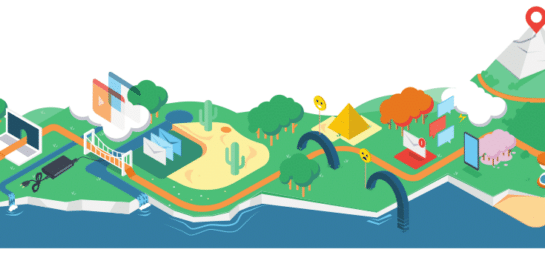5 examples that make a good Service Catalogue

When compiling the online service catalogue, there is a lot you need to take into account in order to manage expectations correctly. Remember that you are working with people, and people have ideas of what they want. Make sure they also know what they can expect!
What is a good Service Portal?
People these days are extremely self-sufficient. We go online to purchase products, log into accounts, book flights and find answers to questions – and often outside of normal business hours. Why would your customers expect anything less from your services? If they come looking for questions on your portal – provide it for them! Set up a self-service portal.
Essentially, it is giving power to the user and letting them do the legwork on finding out what services you offer and how and when you offer them. This frees you up from complaints about unmet expectations and clears both confusion and your schedule a bit.
However, customers can only understand your services as far as your Service Catalogue allows them to. Here is a quick checklist to make sure you manage expectations correctly:
1. Provide a clear description for each product or service
Answers to frequently asked questions regarding a product or service can help customers quickly find their own answers. Examples of common questions are: How do I set up the WiFi connection on my telephone? How do I print on both sides of the paper? How do I adjust my desk?
If questions are common, then it’s statistically probable that more customers will come on your portal looking for the same answer. Provide them a short cut!
2. Pay attention to the quality characteristics of a product or service
Make it clear which regulations apply. For instance, you could explain which meeting room can be used for which event, or which facilities are present in the meeting room. This sets expectations at the right level and ensures your users know what they logically can and cannot expect from you – and how fast.
3. Explain the ordering procedure for a product or service
A clear ordering procedure prevents customers ordering a product or service incorrectly, or them not adhering to the request’s lead time. If you have an option for ordering various services or products – manage expectations! Sometimes there is no way to get someone a new laptop after lunch. Let them know – avoid frustration!
4. Specify the terms of delivery
Also, always inform your customer about the delivery time for a product or service, and make it clear where the product ordered can be picked up. Give your customer all details they may need to not be confused about anything.
But remember to underpromise and overdeliver rather than the opposite. Better set the expectations lower than you could feasibly probably provide, than setting the bar way too high for yourself and having to play catch-up with your own SLAs. This makes it easier to achieve customer delight – which we wrote more about in this article on service excellence.
5. Communicate the service desk’s availability
Lastly, do make sure to grant your customers insight into when and how the service desk can be contacted, and when the customer can pick up their order. This will, again, help manage expectations and people will (hopefully) understand that they can’t log a huge ticket 5 minutes before end of day and expect it to be resolved in the morning.
More about Service Catalogues
For more information on Service Catalogues, check out our e-bundle on developing better Self-Service in your organisation.
Inspire others, share this blog




